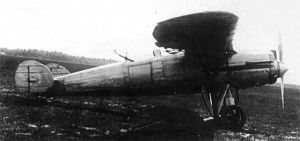Bravo, my dear Mr. Carson! Yes, the Capelis XC 12 indeed was our mystery machine. 
Being unsuccessful and completely unsafe for flight, it was sold to RKO Studious in 1938 for use in film “Five Came Back”. During the war years, however, RKO actually had generated significant additional income from the grounded airplane, by making it available to other studios in the area on a fixed-rate basis. Appearing in numerous wartime features for a variety of studios, the Capelis XC 12 was rented out for $100 a day, or $500 a week, with the RKO rental listing official reminderance “This plane taxis on its own power but can not fly”. :shock:
Perhaps the best wartime film with this machine in significant active role was the “Night Plane from Chunking” (1943), but she was probably immortalized in the “Flying Tigers” (1942) when John Wayne’s character arrives at the base on the Capelis.
Once again – thank you for your effort. May this tiny on-line present mark the dawn of a year of health, happiness and good fortune:
http://www.youtube.com/watch?v=g5FZvwOjCjY&feature=related
Cheers! 










